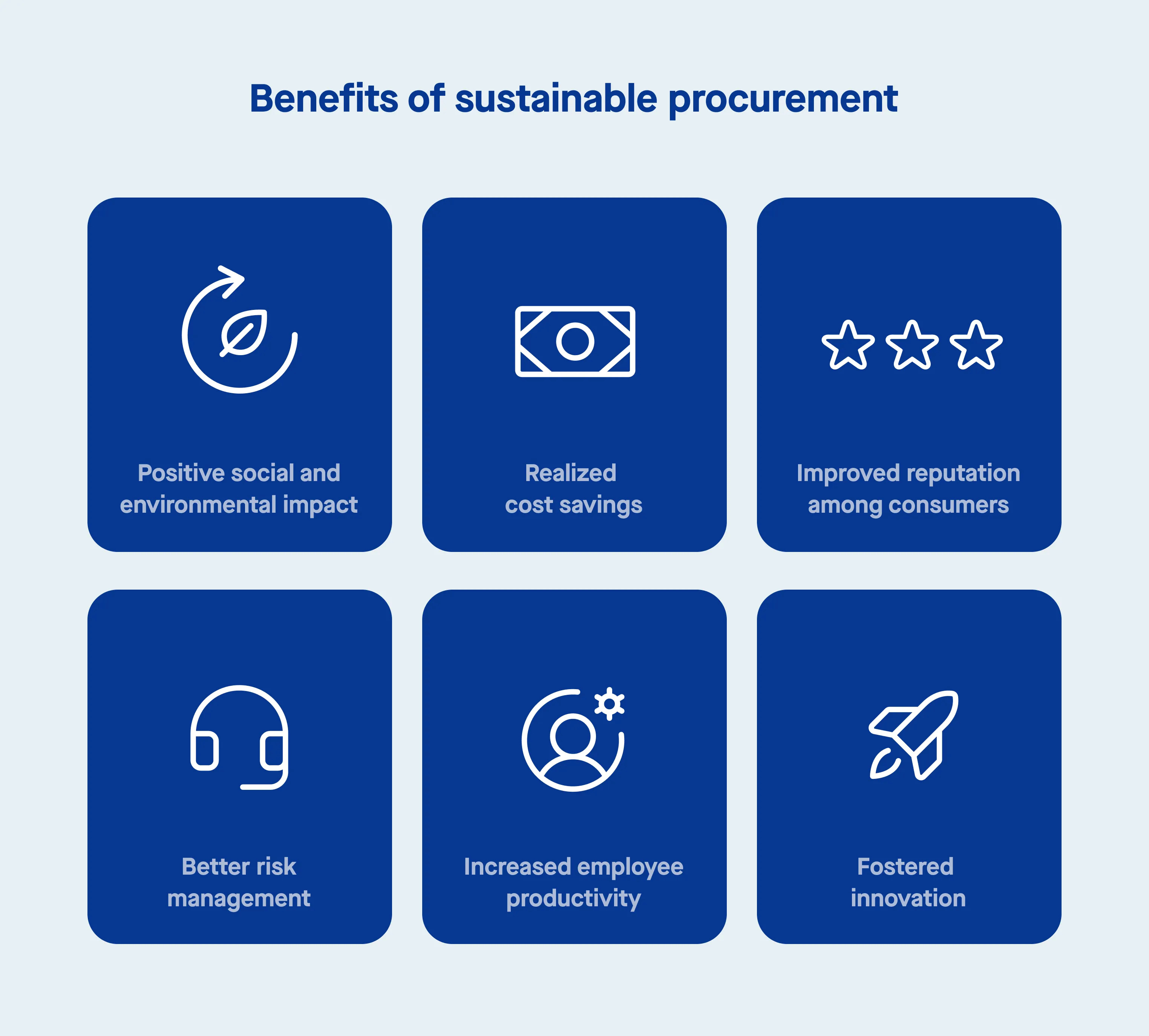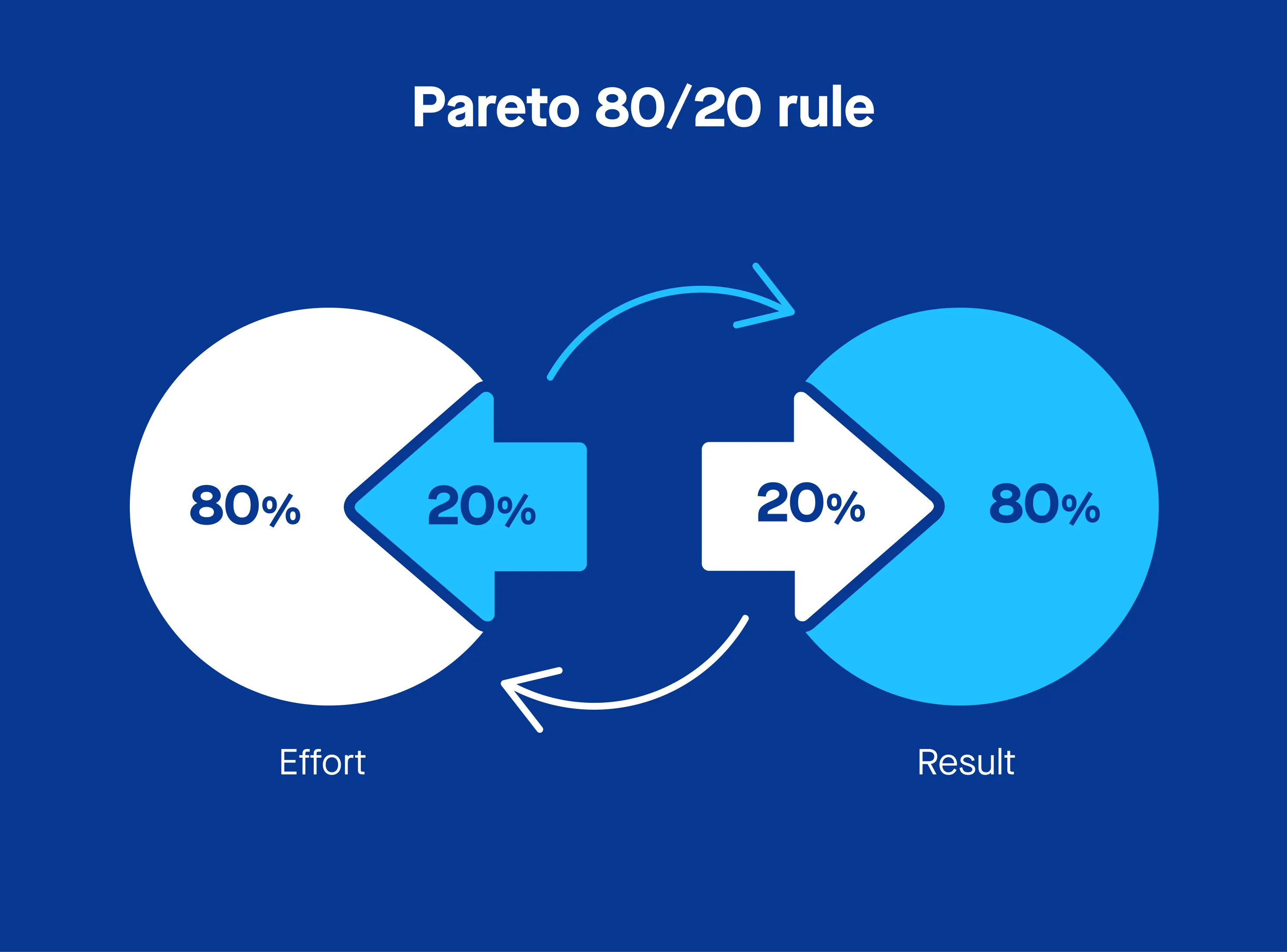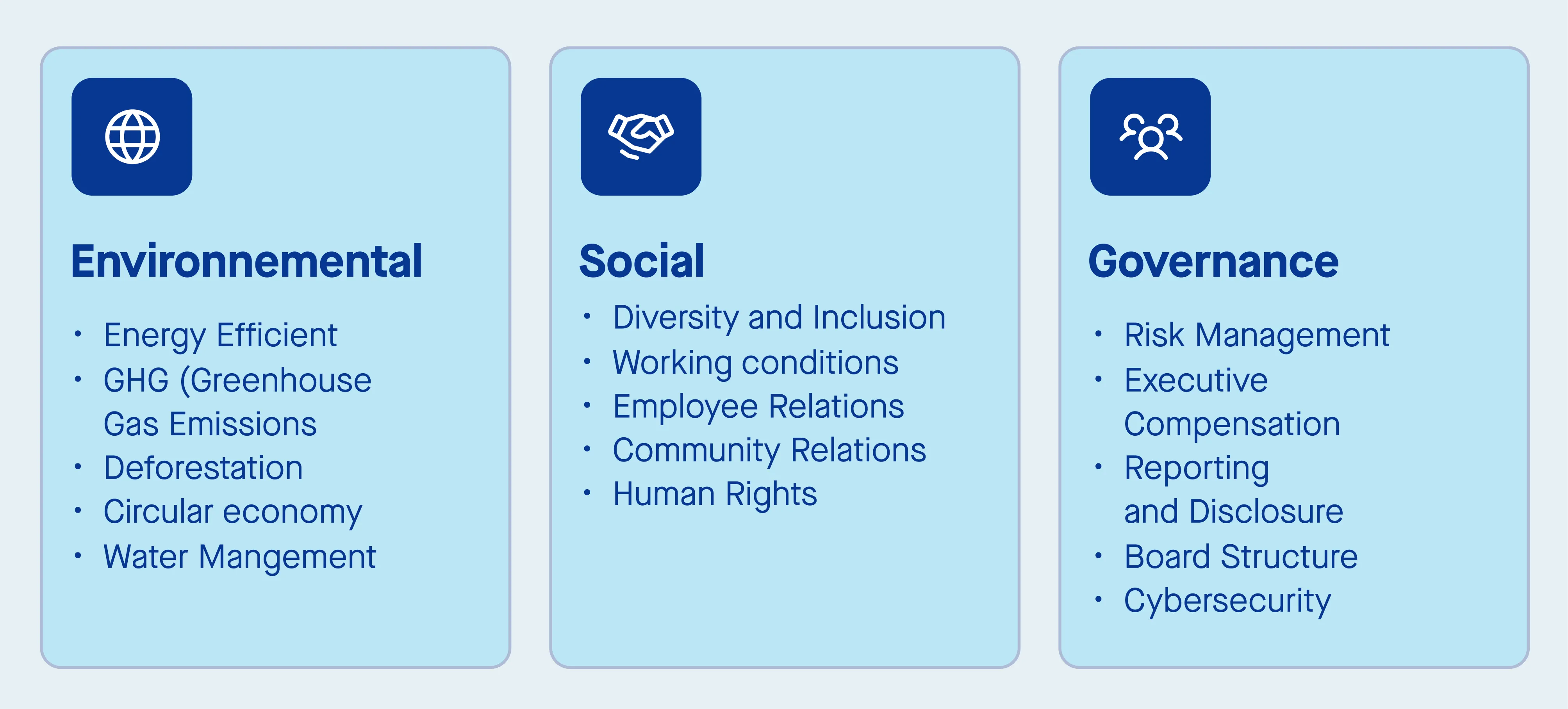Historically, procurement and supply chain management focused on ensuring product efficiency, quality, and cost-effectiveness. However, as global priorities shift toward addressing climate change and fostering social responsibility, procurement has grown to include broader environmental, social, and governance (ESG) concerns.
Today’s procurement leaders must consider not only the price and quality of goods and services but also the climate impacts, resource efficiency, and social responsibility embedded in their supply chains.
Companies increasingly expect their procurement departments to demonstrate alignment with sustainable investment practices, as sustainability now impacts both financial and reputational outcomes.
What is sustainable procurement? A clear definition
Sustainable procurement integrates ESG factors into purchasing decisions to minimize negative impacts on the environment and society.
Sustainable procurement building is essential, considering both internal and external factors that influence efficiency. In practice, sustainable procurement includes greenhouse gas emissions reduction, energy consumption management, waste reduction, and attention to human rights and labor standards. It also considers the entire life cycle of products, from sourcing materials to disposal, aiming to create responsible purchasing practices that foster resource efficiency and long-term sustainability.
Sustainable procurement helps companies align with regulatory compliance requirements, supports community health, and builds resilient supply chains that can adapt to evolving ESG standards. This holistic approach not only addresses climate impacts but also drives competitive advantage by meeting consumer demand for responsible business practices.
The Triple Bottom Line approach
The Triple Bottom Line (TBL) approach is a comprehensive framework that integrates economic, social, and environmental considerations into procurement decisions. Recognizing that procurement choices significantly impact not just the bottom line but also the planet and people, the TBL approach ensures a balanced evaluation of all three aspects.

What are the business benefits of sustainable procurement?
Financial resilience and cost savings
Integrating sustainable procurement practices can lead to cost savings and a reduced carbon footprint through improved resource efficiency and waste reduction. By focusing on the life cycle costs of goods and services, rather than simply the purchase price, companies can make purchasing decisions that minimize energy consumption, reduce material costs, and enhance operational efficiency over time.
Risk management and regulatory compliance
With tightening regulatory frameworks around carbon emissions, greenhouse gas emissions, and social responsibility, sustainable procurement ensures companies can meet key performance indicators (KPIs) around compliance and ESG. Procurement managers who proactively adopt sustainable practices help their companies avoid penalties and reputational risks associated with non-compliance, enhancing their resilience in the face of regulatory shifts.
Enhanced brand reputation and customer loyalty
Consumers and investors increasingly expect companies to demonstrate environmental and social responsibility. Adopting sustainable procurement practices signals to the market that your organization is committed to ESG, which can improve brand reputation and build trust with stakeholders. This focus on responsible sourcing also aligns with the growing trend in sustainable investment practices, appealing to investors focused on long-term, responsible growth.

The evolving role of procurement leaders
Procurement leaders are central to their organizations’ sustainability strategies, as they are responsible for the decisions that define a company’s supply chain footprint. Today, their role goes beyond negotiating price; they are tasked with driving environmental and social value. This expanded role requires a nuanced understanding of ESG considerations, from resource efficiency to ethical labor practices.
To keep up with evolving expectations, procurement managers must develop skills in data analysis, stakeholder engagement, and ESG strategy. They play a critical role in working with suppliers to reduce greenhouse gas emissions and in implementing best practices for energy consumption and waste reduction. In many organizations, procurement managers now influence sustainable investment practices, demonstrating how supply chain initiatives can impact the company’s overall sustainability goals.
How to implement sustainable procurement practices
1. Evaluate the existing setup
Evaluating the existing setup is a crucial step in creating a sustainable procurement practice. This involves a comprehensive assessment of current procurement processes, policies, and procedures to pinpoint areas ripe for improvement. Understanding the current state of your organization’s procurement practices, including strengths, weaknesses, opportunities, and threats, is essential for setting a solid foundation for sustainability goals.
Key aspects to consider during this evaluation include:
- Current procurement policies and procedures: Review existing policies to ensure they support sustainable procurement practices.
- Supplier selection and management processes: Assess how suppliers are chosen and managed, focusing on sustainability criteria.
- Contract management and negotiation practices: Evaluate how contracts are structured and negotiated to incorporate sustainability clauses.
- Spend analysis and data management: Analyze spending patterns and data management practices to identify inefficiencies and opportunities for sustainable improvements.
- Sustainability reporting and metrics: Examine current reporting practices to ensure they accurately reflect sustainability performance.
By thoroughly evaluating the existing setup, organizations can identify gaps and challenges, paving the way for a strategic roadmap to implement sustainable procurement practices effectively.
2. Create a policy framework
Creating a sustainable procurement policy framework is essential for aligning procurement practices with your organization’s sustainability goals. A well-structured policy framework provides clear principles, objectives, and guidelines for making procurement decisions that are consistent, transparent, and accountable.
A robust sustainable procurement policy framework should include:
- Commitment statement: Clearly articulate the organization’s commitment to sustainable procurement.
- Definitions and objectives: Define what sustainable procurement means for your organization and outline its objectives.
- Supplier selection and management guidelines: Establish criteria for selecting and managing suppliers based on their sustainability performance.
- Evaluation criteria: Set clear criteria for evaluating sustainable procurement options, ensuring decisions are aligned with sustainability goals.
- Monitoring and reporting procedures: Develop procedures for tracking and reporting sustainability performance, ensuring continuous improvement.
- Roles and responsibilities: Define the roles and responsibilities of team members in implementing sustainable procurement practices.
By creating a comprehensive policy framework, organizations can ensure that sustainable procurement practices are deeply integrated into their procurement processes and decisions, driving long-term sustainability goals.
3. Engage your suppliers for accurate ESG measurement
Engaging suppliers is essential to ensure accurate tracking of ESG impacts across your procurement and supply chain. This requires collaboration with suppliers to share data on environmental and social indicators, particularly for tracking greenhouse gas emissions and energy consumption. Begin by identifying critical suppliers and aligning on reporting requirements, such as waste reduction and resource use, which will help you build a detailed baseline of your ESG footprint.
Key methods for measuring ESG performance
Industry averages
Use sectoral averages to estimate the ESG impact when direct supplier data is not available.
Spend-based analysis
This method calculates impacts based on the cost of purchased goods and services. While less precise, it provides an approximate view of the supply chain’s impact.
Supplier-based analysis
The most accurate method, involving direct tracking of supplier data, especially helpful in measuring Scope 3 emissions.
Hybrid approach
Combines several methods to build a comprehensive picture of ESG impact, though resource-intensive, this approach provides accuracy where available data allows.
Selecting the right measurement method depends on your data access and the resources available to implement tracking and analysis.
4. Map your supply chain for transparency
Mapping your supply chain offers visibility into the environmental, social, and resource use impacts across the procurement and supply chain, including the integration of sustainable products. A detailed supply chain map helps pinpoint high-impact areas, identify top resource consumers, and track key performance indicators. With these insights, you can prioritize sustainable purchasing decisions and make strategic adjustments that drive meaningful ESG improvements.

5. Focus on strategic suppliers
Applying the Pareto principle can help you maximize your efforts by focusing on the 20% of suppliers responsible for 80% of your supply chain’s climate impacts. Building strong relationships with these suppliers enables better data collection, and collaborative sustainability goals can drive substantial improvements across your procurement network.
6. Set actionable targets
Effective sustainable procurement includes setting clear targets for both your company and suppliers. Targets can focus on absolute reductions, such as lowering total greenhouse gas emissions, or intensity-based reductions, which account for company growth. Work with suppliers to align on these targets and track progress over time, creating a clear path to sustainability.
7. Select new suppliers based on sustainability criteria and performance
When selecting new suppliers, it is crucial to evaluate their sustainability performance across several dimensions:
- Environmental practices: Assess suppliers’ efforts in reducing greenhouse gas emissions, managing resource depletion, and implementing waste reduction strategies.
- Social practices: Consider suppliers’ labor practices, commitment to human rights, and level of community engagement.
- Governance practices: Evaluate the transparency, accountability, and ethical standards upheld by suppliers.
Additionally, organizations should review suppliers’ sustainability reporting and disclosure practices, utilizing frameworks such as the Global Reporting Initiative (GRI) or the Sustainability Accounting Standards Board (SASB) to ensure comprehensive and reliable data.

Overcoming challenges and taking action
Implementing sustainable procurement practices can present several challenges, but with strategic planning and action, these obstacles can be effectively managed.
Balance cost and sustainability considerations in procurement decisions
One of the primary challenges is balancing cost and sustainability considerations. Organizations must evaluate the financial implications of sustainable procurement while recognizing the long-term benefits of reducing their environmental footprint and enhancing social responsibility.
To address this, organizations can:
- Use cost-benefit analysis tools: Evaluate the economic and environmental impacts of different procurement options to make informed decisions.
- Adopt life cycle costing approaches: Assess the total cost of ownership of products and services, considering factors such as energy consumption, maintenance, and disposal costs.
By taking a holistic approach to procurement decision-making, organizations can balance cost and sustainability considerations, ultimately supporting their sustainability goals and driving long-term value.
Sustainability in law and regulation
Procurement and supply chain leaders face increasing regulatory requirements regarding environmental and social governance (ESG) practices. Here are four key regulations that impact sustainable procurement and the global supply chain landscape:
Corporate Sustainability Reporting Directive (CSRD) – European Union
The European Union’s CSRD expands on existing sustainability disclosure requirements for companies operating within or having significant interactions with the EU market. Under CSRD, large and listed companies must report on a range of ESG metrics, including greenhouse gas emissions, energy consumption, waste reduction, and broader social factors. The CSRD aims to create greater transparency and comparability in ESG disclosures, making it essential for procurement teams to prioritize sustainable sourcing, climate impact measurement, and resource efficiency. CSRD compliance will soon influence purchasing decisions, making it crucial for companies to align with its standards to avoid penalties and reputational risks.
German Supply Chain Due Diligence Act (LkSG) – Germany
The German Supply Chain Due Diligence Act, also known as Lieferkettensorgfaltspflichtengesetz (LkSG), mandates that large companies identify and mitigate human rights and environmental risks within their supply chains. This law applies to companies based in Germany with more than 3,000 employees and will expand to companies with 1,000 employees by 2024. Under LkSG, procurement leaders must take responsibility for ensuring that their supply chains adhere to environmental and social standards, such as fair labor practices and resource efficiency. The act includes obligations for due diligence, risk assessment, and reporting, requiring companies to identify, prevent, and address violations at any point in their supply chains.
California Transparency in Supply Chains Act – United States
The California Transparency in Supply Chains Act (CTSCA) requires companies doing business in California with annual worldwide revenues of over $100 million to disclose efforts taken to eliminate slavery and human trafficking from their supply chains. This legislation applies to a broad range of industries, pushing companies to disclose their supply chain monitoring practices, risk assessments, and corrective actions. While focused primarily on social impacts, the CTSCA has influenced procurement leaders to adopt more transparent and ethical supply chain practices, aligning with the increasing expectations around ESG and corporate accountability in the U.S.
UK Modern Slavery Act – United Kingdom
The UK Modern Slavery Act requires companies operating in the UK, with a turnover of over £36 million, to publish annual statements outlining the steps they have taken to address slavery and human trafficking within their supply chains. While the focus is on eliminating forced labor and human rights abuses, the law increasingly pushes procurement leaders to adopt comprehensive, ethical supply chain practices. Many companies are responding by implementing life cycle assessments and enhancing supply chain transparency, aligning with a growing global movement toward responsible sourcing.



